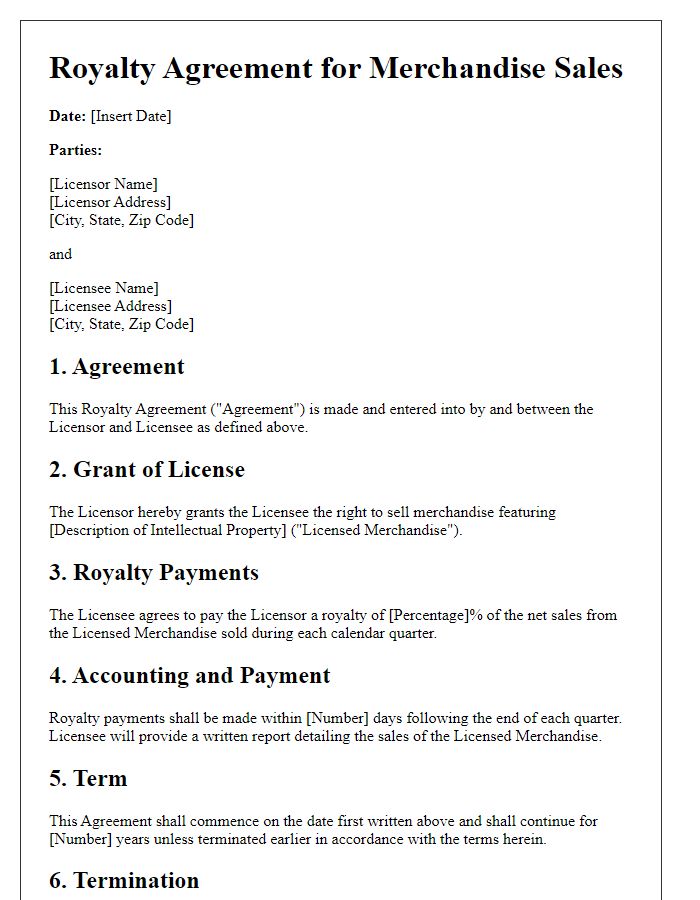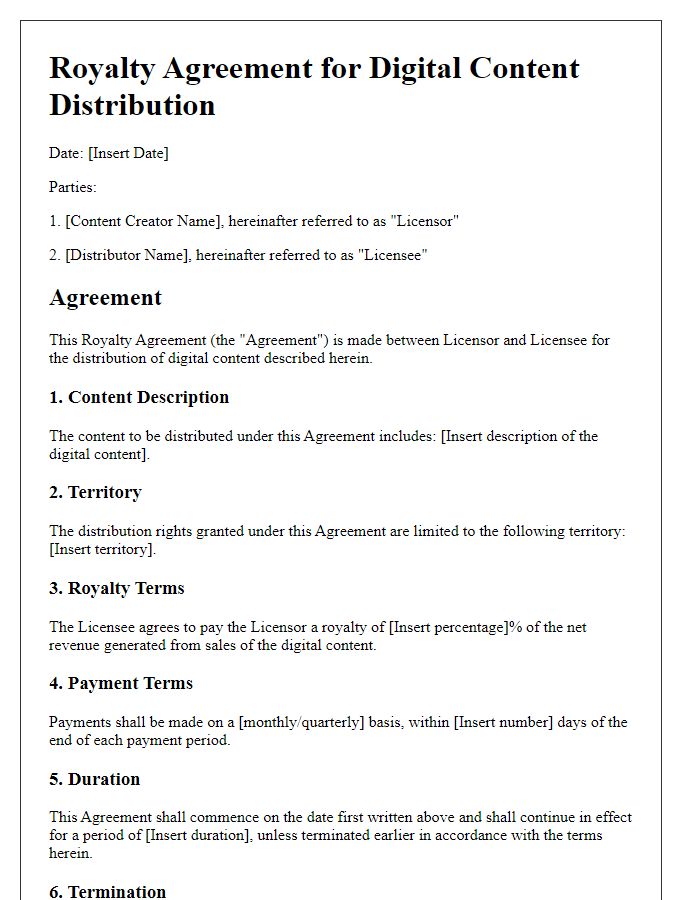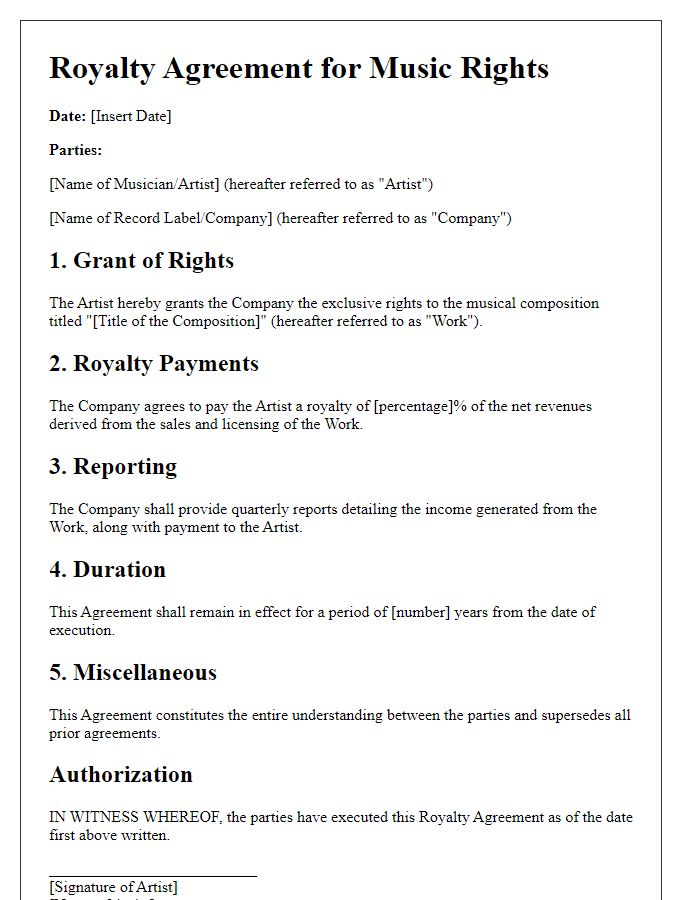Are you curious about establishing a royalty agreement but unsure where to start? Crafting a solid contract can seem daunting, but it doesn't have to be! In this article, we'll walk you through a comprehensive letter template that simplifies the process while ensuring all vital elements are covered. Ready to dive deeper into the world of royalty agreements? Let's explore together!

Agreement Terms
A royalty agreement establishes the financial terms for using intellectual property, including patents, trademarks, or copyrights. Typically, agreements specify percentage royalties ranging from 5% to 15% of gross sales or profits, depending on the industry and asset value. Parties involved, such as licensors (owners of intellectual property) and licensees (users), have clearly defined responsibilities, including reporting sales figures on a quarterly or annual basis. Additionally, territory restrictions often apply, indicating specific geographic areas where the licensee can operate. Duration of the agreement is usually set for 5 to 10 years, with options for renewal based on performance criteria. Payment schedules may also be outlined, detailing when royalty payments are due, ensuring transparent financial transactions between both parties.
Compensation and Royalty Structure
The compensation and royalty structure defined in this agreement outlines the financial obligations and entitlements between the parties involved in the partnership concerning intellectual property. The royalty percentage, set at 10% of the net profits generated from the sales of products utilizing the licensed intellectual property, represents a standard benchmark within the industry. Payment intervals are scheduled quarterly, allowing for immediate reinvestment opportunities. The net profits include all revenue streams, excluding production costs, distribution fees, and marketing expenses. Additionally, a minimum annual payment of $5,000 ensures a baseline income, even in the event of low sales performance. Transparency in financial reporting will be maintained, with sales statements due within 30 days of the conclusion of each quarter, facilitating accurate and timely royalty calculations.
Intellectual Property Rights
The royalty agreement for intellectual property rights is a crucial document that outlines the terms and conditions between the licensor (the owner of the intellectual property, such as copyrights, patents, or trademarks) and the licensee (the party acquiring the rights to use the intellectual property). Key elements include the percentage of royalties to be paid (typically ranging from 5% to 15%, depending on industry norms), the duration of the agreement (set to span several years, often between 3 to 10 years), and specific territories where the license is valid (could include countries like the United States, Canada, or the European Union). The agreement also details obligations regarding reporting sales, maintaining quality standards related to the intellectual property, and the consequences of violations (which may involve termination of rights or monetary penalties). Such agreements are essential for protecting the financial interests and maintaining the integrity of creative works, inventions, or brand identities.
Duration and Termination Conditions
The royalty agreement outlines the duration and termination conditions specifying the timeline and the circumstances under which the agreement may be ended. Typically, the initial duration of a royalty agreement can span several years, commonly ranging from three to five years, with options for renewal based on mutual consent. Termination conditions may include scenarios such as breach of contract, failure to meet sales thresholds, or insolvency events. Specific clauses may also dictate how written notice of termination must be given, often requiring a notice period of thirty to ninety days. Additionally, the agreement might stipulate post-termination obligations regarding the remaining inventory and ongoing royalties due for sales made prior to termination.
Confidentiality and Non-Disclosure Provisions
Confidentiality and Non-Disclosure Provisions in a royalty agreement are critical for protecting sensitive information. Such provisions ensure that any proprietary information, trade secrets, or financial data shared between parties, including the royalty payment structure or sales figures, is kept confidential. The agreement may explicitly define what constitutes confidential information, such as marketing strategies or product development details. Violations of these provisions could result in legal repercussions, including financial penalties or injunctions, aimed at preventing the misuse of sensitive information. It's essential for all parties involved to understand their obligations under these provisions to maintain trust and safeguard intellectual property rights effectively.













Comments